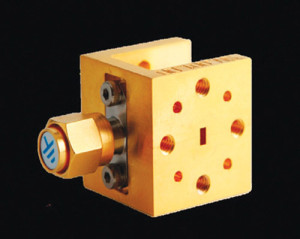Terahertz electronic devices

Metal oxide semiconductor (MOS) transistor is the building block of integrated circuits (ICs) in electronics and is the engine that powers these. Today’s most complex ICs, such as microprocessors, graphics and DSP chips, pack more than 100 million MOS transistors on a single chip. Integration of one billion transistors into a single chip will soon become a reality. The semiconductor industry faces an environment that includes increasing chip complexity, continued cost pressures, increasing environmental regulations and growing concern about energy consumption. The observation that the number of transistors per integrated circuit doubles every 18 to 24 months is well-known to industry analysts and many of the general public. New materials and technologies are needed to support the continuation of Moore’s law.
TE holds promise of greatly-expanding and numerous applications in detection of biological and chemical hazardous agents, building and airport security, and explosive detection, as well as in radio astronomy, biology and medicine. Many companies are thinking towards exploiting the commercial applications of TE beyond traditional aerospace and medical markets. The technology being exploited depends on the fabrication of electronic devices that operate above 100GHz, where traditional electronic circuits no longer function. It is a generic device technology that can be used as both a detector and source of THz radiation, opening the potential for very-high-frequency communication systems and radars. The devices, Schottky diodes, operate at room temperature, rather than under cryogenic conditions like most competitor technologies, significantly simplifying system infrastructure and reducing cost.
Companies are focusing on the development of microwave monolithic integrated circuit (MMIC) technologies at frequencies approaching 1THz, including corresponding circuits, components and modules. Voltage-controlled oscillators and amplifiers, power amplifiers, frequency multipliers and mixers will soon be developed with operating frequencies beyond 500GHz. These devices shall be used to realise compact integrated front-end modules for radar and communication systems.
THz transistor technology is now emerging and short-channel Si CMOS, InGaAs based hetero-structure bipolar transistors and high-electron mobility transistors have reached cut-off frequencies and maximum frequencies of oscillation in the THz range. Si Schottky diodes have demonstrated millimetre-wave detection. GaN based FETs have additional advantages at THz frequencies with a different design. The device feature-sizes have shrunk to the point where ballistic mode of electron transport becomes important or even dominant. THz radiation excites oscillations of the electron density (plasma waves) in transistor channels. Plasma waves propagate with velocities much larger than electron drift velocities and have characteristic frequencies in the THz range even for devices with feature-sizes exceeding a few hundred nanometres. The rectification of plasma waves by the device non-linearity can be used for detecting THz radiation and for imaging and in-situ testing of transistor structures. Using synchronised THz transistor arrays, it is expected to yield dramatic performance improvements of plasmonic THz electronic detectors and sources.
Today’s research of TE is also focused on a variety of different compact optoelectronic devices, like photoconductive antennae (PCA), which operate at room temperature but need an external laser excitation, or THz quantum cascade lasers that are powerful but currently operate at cryogenic temperatures. One of the main sources of THz radiation, the inter-digitated photoconductive antenna, can now be tuned to THz frequencies that were previously difficult to reach. Researchers found that changing the spacing between electrodes in the antenna’s structure enables the emission spectrum to be centred at a chosen frequency—a property that will be useful for spectroscopy and imaging, where access to particular parts of the THz spectrum is needed.
We will need to think about new geometries and new materials to improve these issues, possibly combined with the use of cheaper and compact fibre based laser systems. Improving these types of sources will permit the THz technological range to become mature and comparable to those used in microwave electronics and IR optical systems.
Challenges ahead
The objective of the TE program is to develop critical devices and integration technologies necessary to realise compact, high-performance electronic circuits that operate at centre frequencies exceeding 1THz. The main focus will be on the development of two critical THz technical areas. One is THz transistor electronics to develop multi-THz InP HBT and InP HEMT transistor technologies to enable TMICs along with THz low-loss inter-element interconnect and integration technologies to build compact THz transmitter and receiver modules. Another is THz high-power amplifier modules for compact, micro-machined vacuum electronics devices to produce a significant increase of output power at frequencies beyond 1THz and to radiate this energy at an antenna.
The success of TE will lead to revolutionary applications by enabling coherent THz-processing techniques such as THz-imaging systems, sub-MMW, ultra-wideband, ultra-high-capacity communication links and sub-MMW, single-chip widely-tuneable synthesisers for explosive-detection spectroscopy. Despite intense research efforts, there have been many challenges that have not yet been overcome in achieving a miniature, efficient THz source. Further research in TE should investigate innovative approaches that enable revolutionary advances in electronic devices and ICs achieving THz frequencies. Efforts are being made to use band-gap engineering and the unique properties of graphene to develop basic building blocks of graphene TE and to accelerate its applications.










